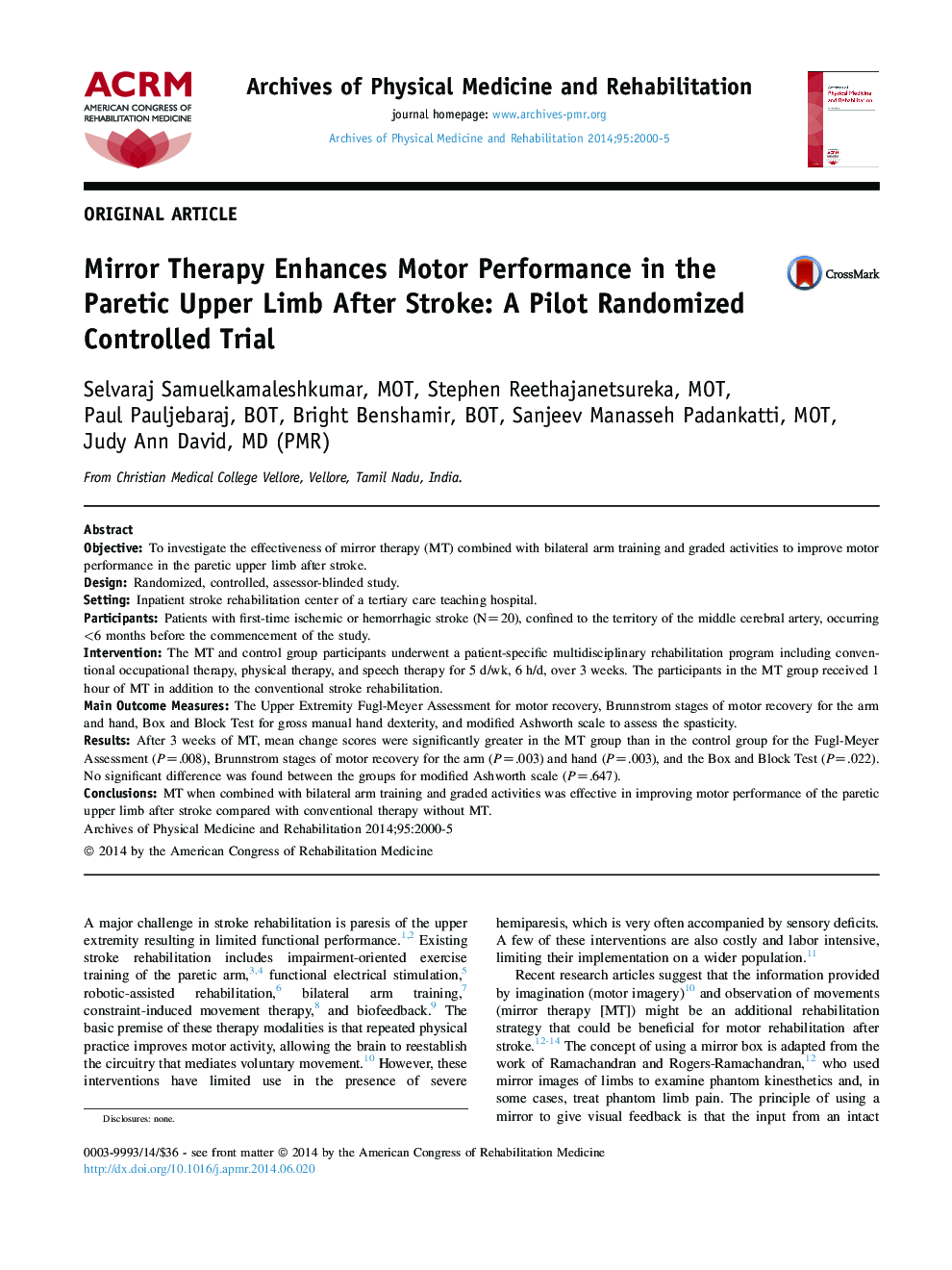| Article ID | Journal | Published Year | Pages | File Type |
|---|---|---|---|---|
| 3448572 | Archives of Physical Medicine and Rehabilitation | 2005 | 6 Pages |
ObjectiveTo investigate the effectiveness of mirror therapy (MT) combined with bilateral arm training and graded activities to improve motor performance in the paretic upper limb after stroke.DesignRandomized, controlled, assessor-blinded study.SettingInpatient stroke rehabilitation center of a tertiary care teaching hospital.ParticipantsPatients with first-time ischemic or hemorrhagic stroke (N=20), confined to the territory of the middle cerebral artery, occurring <6 months before the commencement of the study.InterventionThe MT and control group participants underwent a patient-specific multidisciplinary rehabilitation program including conventional occupational therapy, physical therapy, and speech therapy for 5 d/wk, 6 h/d, over 3 weeks. The participants in the MT group received 1 hour of MT in addition to the conventional stroke rehabilitation.Main Outcome MeasuresThe Upper Extremity Fugl-Meyer Assessment for motor recovery, Brunnstrom stages of motor recovery for the arm and hand, Box and Block Test for gross manual hand dexterity, and modified Ashworth scale to assess the spasticity.ResultsAfter 3 weeks of MT, mean change scores were significantly greater in the MT group than in the control group for the Fugl-Meyer Assessment (P=.008), Brunnstrom stages of motor recovery for the arm (P=.003) and hand (P=.003), and the Box and Block Test (P=.022). No significant difference was found between the groups for modified Ashworth scale (P=.647).ConclusionsMT when combined with bilateral arm training and graded activities was effective in improving motor performance of the paretic upper limb after stroke compared with conventional therapy without MT.
